Asia-Pacific Smart Home Market Size
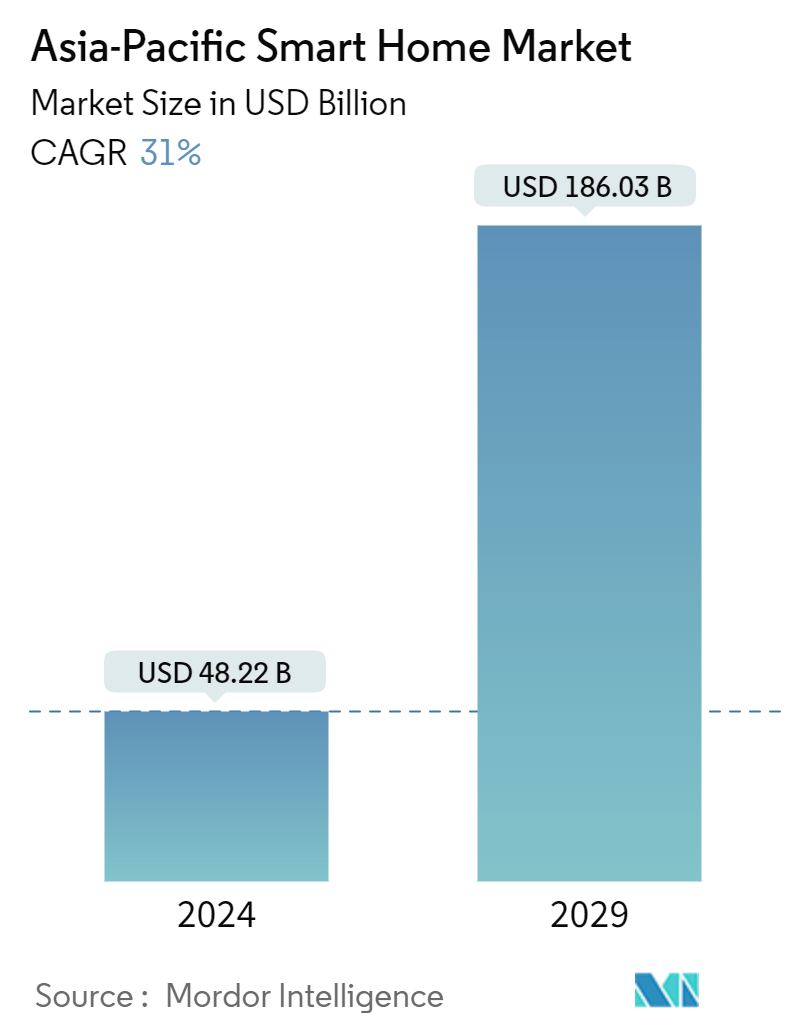
| Study Period | 2019 - 2029 |
| Base Year For Estimation | 2023 |
| Market Size (2024) | USD 48.22 Billion |
| Market Size (2029) | USD 186.03 Billion |
| CAGR (2024 - 2029) | 31.00 % |
| Market Concentration | Low |
Major Players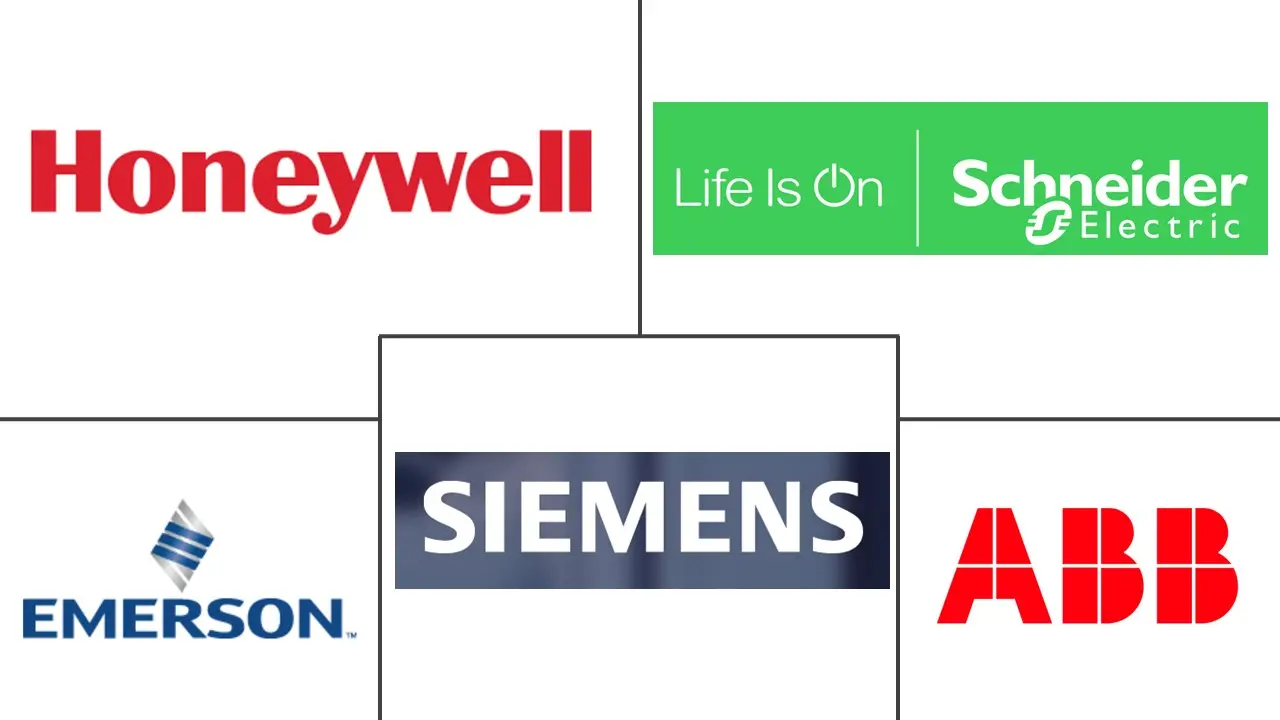
*Disclaimer: Major Players sorted in no particular order |
Asia-Pacific Smart Home Market Analysis
The Asia-Pacific Smart Home Market size is estimated at USD 48.22 billion in 2024, and is expected to reach USD 186.03 billion by 2029, growing at a CAGR of 31% during the forecast period (2024-2029).
- Home automation and smart homes broadly describe various monitoring solutions, controls, and automated functions. While basic home automation can include anything from motor-operated garage doors to automated security systems, smart home systems involve a web portal or smartphone application as the user interface to interact with a computerized system.
- Key drivers of this surge include the rising adoption of smartphones, expanding online business presence, and heightened government initiatives aimed at digitalizing economies. The GSMA's 2023 report, "The Mobile Economy for Asia Pacific," highlights the region's pioneering 5G markets, with countries like Australia, Japan, Singapore, and South Korea embracing 5G as a mainstream technology.
- Moreover, India stands out as one of the fastest-growing 5G markets, projected to add tens of millions of 5G connections in 2023 alone. The region is anticipated to boast approximately 1.4 billion 5G connections by 2030, representing 41% of all mobile connections.
- Asia-Pacific has also witnessed a consistent rise in unique mobile subscribers. As per GSMA forecasts, the region will see an addition of nearly 400 million new subscribers over the next seven years. South Asia, in particular, commands about two-thirds of the region's total mobile subscriber base, and it's expected to continue leading in new subscriber additions through 2030. This surge in smartphone popularity has, in turn, fueled a boom in mobile application development. Leveraging this trend, households increasingly integrate their smartphones with electronic devices to create temporary networks, especially for smart home automation.
- The smart HVACR (heating, ventilation, air conditioning, and refrigeration) systems concern the house's environmental controls. They comprise smart thermites, sensors, control valves, smart actuators, air conditioning systems, and smart room heaters. Across the region, due to the increasing government regulations across developed and developing countries, most of the new buildings need more competent heating and cooling systems, augmenting the growth of HVAC systems and the market.
- Also, integrating artificial intelligence and machine learning is revolutionizing the interaction between smart home products. AI and ML enable smart home products to display relevant content based on the weather, time of day, and other contextual factors. This allows for a more personalized and engaging experience for viewers. The rollout of 5G networks and the Internet of Things (IoT) is expected to create more demand in the market.
Asia-Pacific Smart Home Market Trends
HVAC Systems are Among the Most Significant Contributors to the Market
- The Asia-Pacific HVAC market is surging, driven by rising temperatures due to global warming and the booming construction sector. This, in turn, is spurring technological advancements in HVAC systems to enhance efficiency.
- As a result, key players in the market are largely focusing on developing intelligent, automated, and eco-friendly HVAC solutions. For instance, integrating IoT sensors allows these systems to collect real-time data, boosting operational efficiency. The adoption of IoT technology in smart HVAC solutions is revolutionizing the sector enhancing functionality and performance.
- Moreover, the industry is rapidly moving toward more intelligent, automated, and eco-conscious HVAC systems. With the advent of AI-based solutions and the integration of IoT in smart HVAC, the industry is witnessing a prominent shift towards energy efficiency, meeting the escalating demand for such systems.
- The surging demand for energy-efficient systems further bolsters automation in the HVAC sector. Notably, the International Energy Agency (IEA) predicts a remarkable surge in AC sales in Southeast Asia, from 40 million units in 2017 to 300 million by 2040, with Indonesia accounting for half of this figure.
- However, this growth comes with challenges. Without proactive measures to promote energy-efficient units, the region's cooling needs could necessitate an additional 200 GW of power generation by 2040. Cooling demands may contribute up to 30% of the region's peak electricity consumption. Recognizing these concerns, governments are increasingly focusing on energy-saving initiatives, further propelling the adoption of smart HVAC systems.
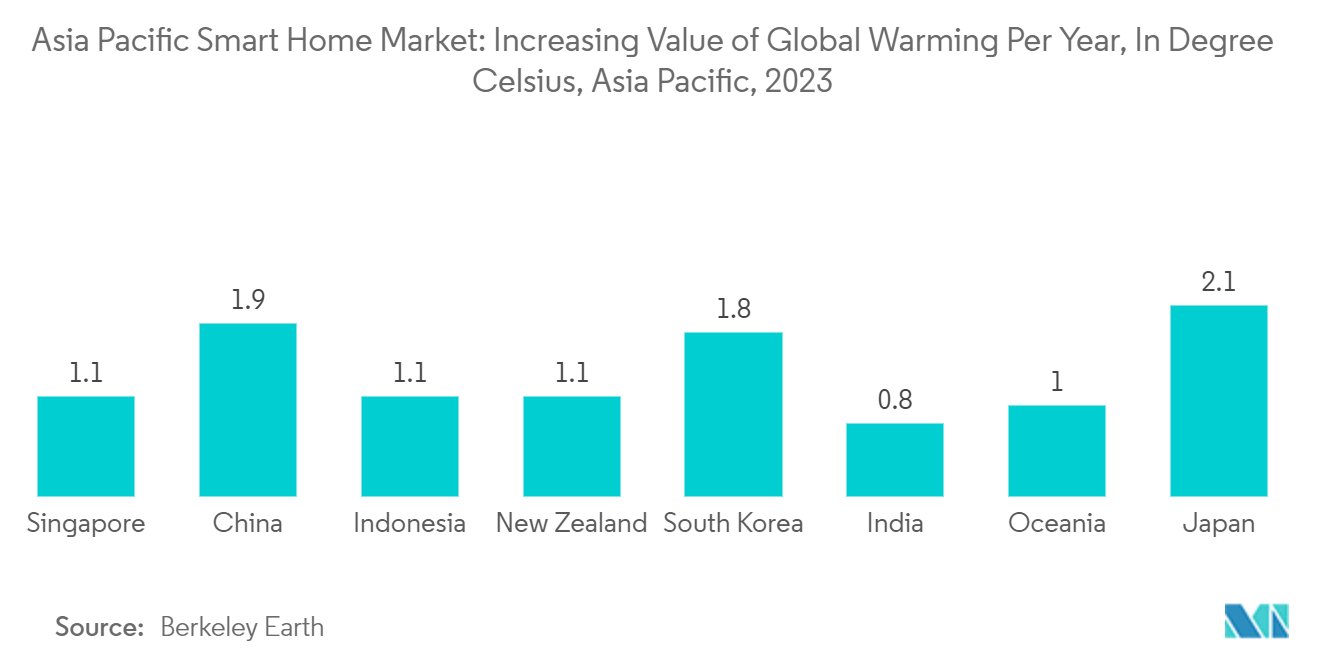
China Holds the Major Share of the Market
- Chinese consumers increasingly embrace the concept of 'smart homes' as a wave of smart devices floods the market. Brands are placing a strong emphasis on 'smartness' in their home appliances. Through strategic public-private partnerships and targeted technological innovations, China has effectively implemented smart city infrastructure in numerous major metropolises, extending its impact to the residential sector.
- Consequently, various smart home products and household equipment have seamlessly integrated into daily life in Chinese cities alongside smartphones and watches. These include smart door locks, doorbells, kitchen appliances, cat litter boxes, and intelligent sweeping and vacuum robots.
- Moreover, manufacturers of smart home devices in China are increasingly harnessing digital technologies to revamp their products. For example, air conditioners with self-learning capabilities, adjusting room humidity and temperature based on user habits, are now commonplace.
- Notably, with the rise of the construction sector, consumer enthusiasm for smart home products remains high. As per Yakai, Chinese people have 4.1 per household, the highest in the world, compared with a global average of 3.5. In addition, one-third of Chinese respondents represent 27% globally, as they have five or more such products. All these factors present a positive growth prospect for smart homes in China.
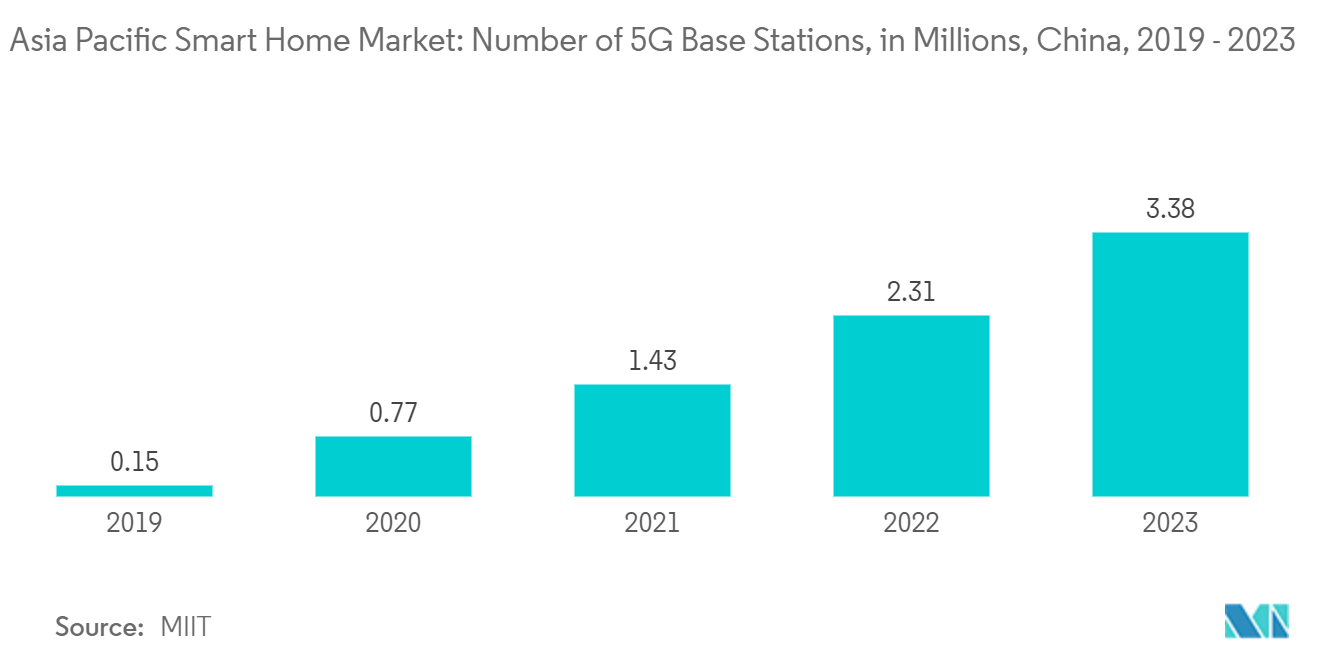
Asia-Pacific Smart Home Industry Overview
The Asia-Pacific smart home market is fragmented due to the presence of various small and large players. All the major players account for a significant market share and focus on expanding the global consumer base. Some of the significant players in the market are Schneider Electric SE, Emerson Electric Corporation, ABB Ltd, Honewell International Inc., and Siemens AG. Companies are increasing their market share by forming multiple collaborations, partnerships, and acquisitions and investing in introducing new products to earn a competitive edge during the forecast period.
In December 2023, Haier Smart Home Co. Ltd announced its intention to acquire the commercial refrigeration business of Carrier Global Corporation. The vendor intends to restructure the Target Business into the Target Company. With this transaction, the company wants to create a significant hold on molding itself towards environmental sustainability initiatives, pushing alternative refrigerants in the commercial refrigeration industry.
In October 2023, Rinnai Australia announced the acquisition of iZone, a manufacturer of smart home and ducted air conditioning control systems. The acquisition of iZone showcases a noteworthy milestone for Rinnai Australia and broadens Rinnai’s brand portfolio, which also incorporates other well-known Australian HVAC brands, such as Brivis and APAC.
Asia-Pacific Smart Home Market Leaders
-
Schneider Electric SE
-
Emerson Electric Co.
-
ABB Ltd.
-
Honeywell International Inc.
-
Siemens AG
*Disclaimer: Major Players sorted in no particular order
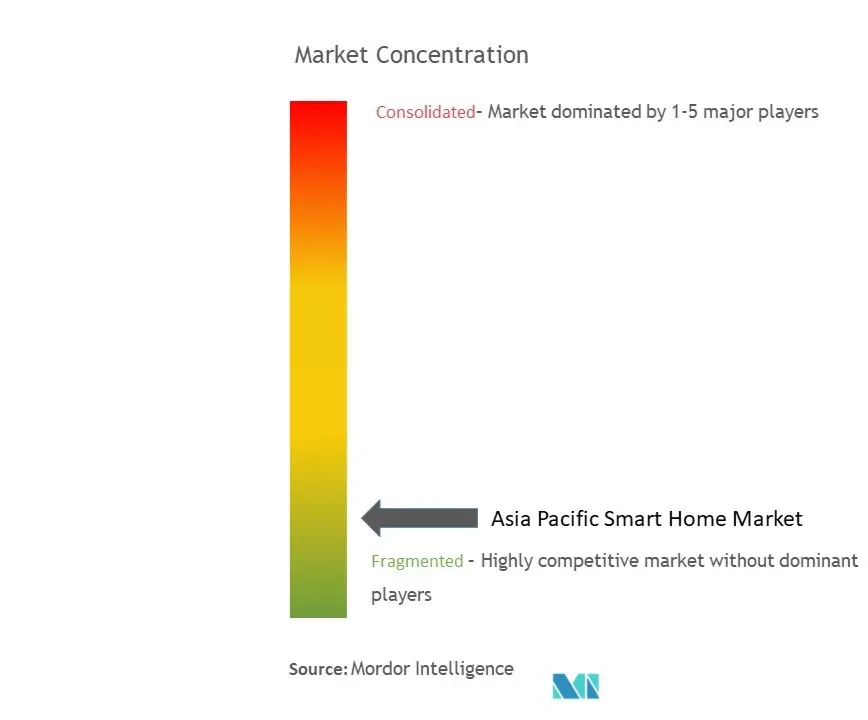
Asia-Pacific Smart Home Market News
- March 2024: ABB announced the introduction of Matter connectivity standard compatibility and new partner Add-ons that enhance interoperability, providing users greater flexibility and the ability to choose from a wider range of smart home devices. With the Matter firmware, an emerging, open-source connectivity standard for smart homes, ABB-free home is expected to become part of other smart home ecosystems such as Apple Home, Google Home, Amazon Alexa, and Samsung.
- February 2024: Microsoft disclosed a new patent indicating that the company is developing a self-sufficient smart home system for Windows devices. This system, known as multi-device cross-experience, will be driven by AI. It allows connected devices to interact with each other through advertising without the need for user input. Devices within the system will continuously communicate with each other and perform actions when certain conditions are fulfilled.
Asia-Pacific Smart Home Market Report - Table of Contents
1. INTRODUCTION
- 1.1 Study Assumptions and Market Definition
- 1.2 Scope of the Study
2. RESEARCH METHODOLOGY
3. EXECUTIVE SUMMARY
4. MARKET INSIGHTS
- 4.1 Market Overview
- 4.2 Industry Value Chain Analysis
-
4.3 Industry Attractiveness - Porter's Five Forces Analysis
- 4.3.1 Bargaining Power of Suppliers
- 4.3.2 Bargaining Power of Consumers
- 4.3.3 Threat of New Entrants
- 4.3.4 Threat of Substitute Products
- 4.3.5 Intensity of Competitive Rivalry
- 4.4 Technology Snapshot
- 4.5 Impact of COVID-19 Aftereffects and Other Macroeconomic Factors on the Market
5. MARKET DYNAMICS
-
5.1 Market Drivers
- 5.1.1 Rising Concern about Home Security and Safety
- 5.1.2 Advances in Technology, such as IoT, Artificial Intelligence, and Voice Controlled Assistants
-
5.2 Market Restraints
- 5.2.1 Complex Installation and Setup
- 5.2.2 Interoperability Issues
6. MARKET SEGMENTATION
-
6.1 By Product Type
- 6.1.1 Comfort and Lighting
- 6.1.2 Control and Connectivity
- 6.1.3 Energy Management
- 6.1.4 Home Entertainment
- 6.1.5 Security
- 6.1.6 Smart Appliances
- 6.1.7 HVAC Control
-
6.2 By Technology
- 6.2.1 Wi-Fi
- 6.2.2 Bluetooth
- 6.2.3 Other Technologies
-
6.3 By Country***
- 6.3.1 China
- 6.3.2 Japan
- 6.3.3 India
- 6.3.4 South Korea
- 6.3.5 Australia and New Zealand
7. Competitive Landscape
-
7.1 Company Profiles*
- 7.1.1 Schneider Electric SE
- 7.1.2 Emerson Electric Co.
- 7.1.3 ABB Ltd.
- 7.1.4 Honeywell International Inc.
- 7.1.5 Seimens AG
- 7.1.6 Signify Holding
- 7.1.7 Microsoft Corporation
- 7.1.8 Google Inc.
- 7.1.9 Cisco Systems Inc.
- 7.1.10 General Electric Company
- 7.1.11 Dahua Technology
- 7.1.12 D-Link Electronics Co. Ltd
8. INVESTMENT ANALYSIS
9. FUTURE OF THE MARKET
** Subject To AvailablityAsia-Pacific Smart Home Industry Segmentation
A smart home refers to integrated and networked devices that automate different functions within a home and can communicate with each other, as well as a centralized control interface. The prominent purpose of this type of system is to enhance comfort, safety, energy efficiency, and management of household resources.
The Asia-Pacific smart home market is segmented by product type (comfort and lighting, control and connectivity, energy management, home entertainment, security, smart appliances, and HVAC control), technology (Wi-Fi, Bluetooth, and other technologies), and country (China, Japan, India, South Korea, and Rest of Asia-Pacific). The market sizes and forecasts are provided in terms of value (USD) for all the above segments.
| By Product Type | Comfort and Lighting |
| Control and Connectivity | |
| Energy Management | |
| Home Entertainment | |
| Security | |
| Smart Appliances | |
| HVAC Control | |
| By Technology | Wi-Fi |
| Bluetooth | |
| Other Technologies | |
| By Country*** | China |
| Japan | |
| India | |
| South Korea | |
| Australia and New Zealand |
Asia-Pacific Smart Home Market Research FAQs
How big is the Asia-Pacific Smart Home Market?
The Asia-Pacific Smart Home Market size is expected to reach USD 48.22 billion in 2024 and grow at a CAGR of 31% to reach USD 186.03 billion by 2029.
What is the current Asia-Pacific Smart Home Market size?
In 2024, the Asia-Pacific Smart Home Market size is expected to reach USD 48.22 billion.
Who are the key players in Asia-Pacific Smart Home Market?
Schneider Electric SE, Emerson Electric Co., ABB Ltd., Honeywell International Inc. and Siemens AG are the major companies operating in the Asia-Pacific Smart Home Market.
What years does this Asia-Pacific Smart Home Market cover, and what was the market size in 2023?
In 2023, the Asia-Pacific Smart Home Market size was estimated at USD 33.27 billion. The report covers the Asia-Pacific Smart Home Market historical market size for years: 2019, 2020, 2021, 2022 and 2023. The report also forecasts the Asia-Pacific Smart Home Market size for years: 2024, 2025, 2026, 2027, 2028 and 2029.
Asia-Pacific Smart Home Industry Report
Statistics for the 2024 Asia-Pacific Smart Home market share, size and revenue growth rate, created by Mordor Intelligence™ Industry Reports. Asia-Pacific Smart Home analysis includes a market forecast outlook for 2024 to 2029 and historical overview. Get a sample of this industry analysis as a free report PDF download.



